Tennis elbow (Epicondylitis radialis humeri)
Tennis elbow (tennis elbow): Symptoms, causes and treatment from Vienna
Painful tennis elbow, also known as tennis elbow, is a common impairment that affects not only tennis players, but also people in a variety of professions and activities. The pain and discomfort associated with tennis elbow can greatly interfere with everyday life. Failure to treat or recognize the condition can lead to a serious therapeutic problem associated with a reduction in work or sports performance. On this page, we will take an in-depth look at the symptoms, causes, and various treatment options for tennis elbow to help sufferers better understand this troublesome condition and give you an overview of this condition.
What is tennis elbow?
Tennis elbow or tennis elbow belongs to the so-called enthesopathies. Enthesopathies are diseases of the tendon attachments, i.e. diseases of the sites on the bone where a tendon or joint capsule attaches. In short, this means that tennis elbow is the irritation of the extensor tendon attachment on the outside of the elbow. The clinical picture is typically manifested by pain due to chronic overuse of the respective body regions.
Anatomy & Origin
The muscle origin represents a very complex structure. First, the connective tissue fibers pass from the muscles into the cartilage, which is already in the bone. Then this calcified cartilage slowly becomes bone. This is important because it makes the connection between muscle and bone stable and flexible. This means that the transition between muscle and bone can respond well to changes in movement without breaking down. All this makes the connection strong. However, local chronic overloading of the muscle origin leads to fragmentation of the calcified cartilage zone and the development of fatty degeneration and even death of the cells in this transition zone, causing problems and discomfort.
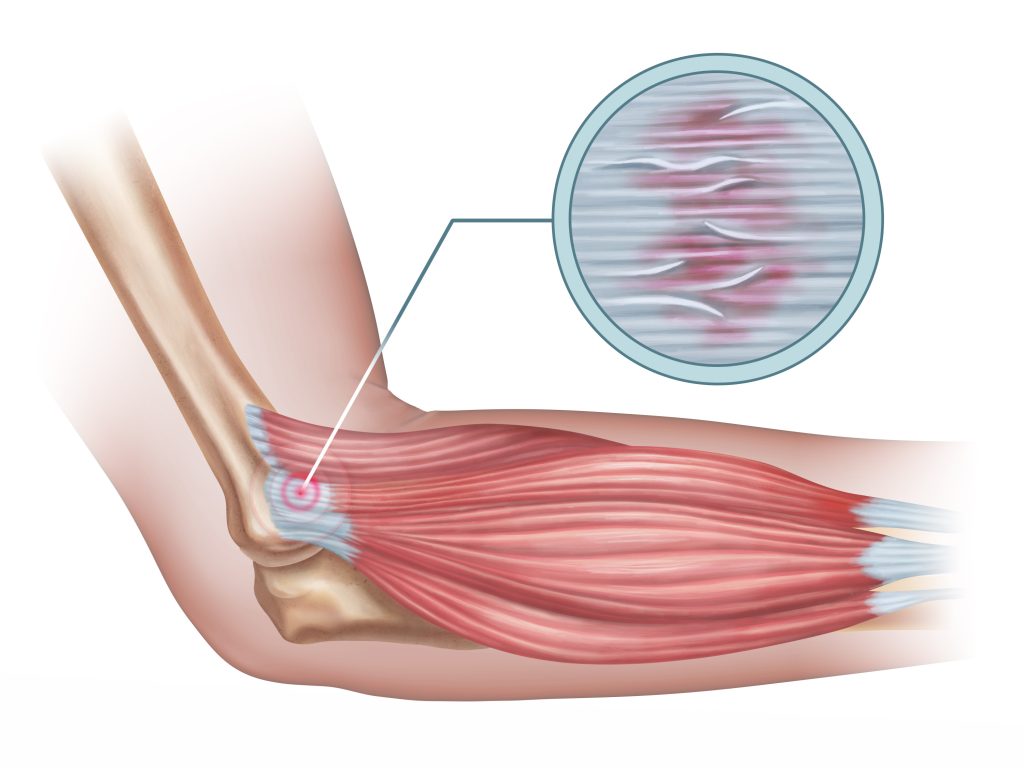
Symptoms of tennis elbow
Symptoms of tennis elbow can include pain, tenderness and discomfort on the outer side of the elbow. This pain may worsen when reaching, lifting objects, or moving the wrist and forearm. Sometimes the pain even radiates to the forearm or wrist. The affected area may also be tender, and there may be mild swelling or redness. The pain may be mild at first and then worsen over time, especially if the activities that trigger tennis elbow continue. It is important to note that the symptoms of tennis elbow can mimic other medical problems, so an accurate diagnosis from a specialist is necessary.
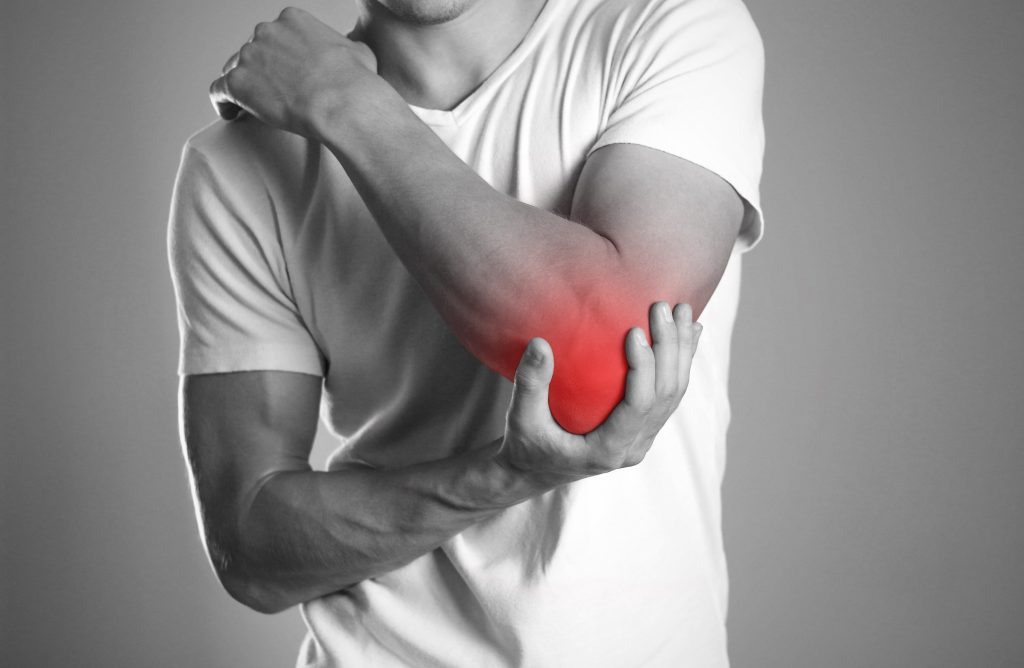
Causes of tennis elbow
Causes of tennis elbow
Tennis elbow, or tennis elbow, is caused by repetitive strain and overuse of the tendons that attach to the forearm muscles on the outer side of the elbow. This stress leads to small injuries and micro tears in the tendons, which eventually lead to inflammation and pain. Although the name “tennis elbow” indicates that tennis is the primary cause, this injury can also be triggered by other repetitive motions of the wrists and forearms that occur in a variety of activities, including non-sports activities such as typing on a keyboard or lifting objects.
In athletes, inadequately performed training also results in better blood supply to the muscle after exercise and paradoxical bleeding at the beginning of the muscle. In general, the clinical picture shows chronic muscle pain at a specific location (in tennis elbow, at the muscle origin), initially only during exertion and later also at rest. The pain gradually leads to a weakening of the respective muscle group and rarely also to a restriction of movement.
Frequency and localization of pain
The greatest pain occurs at the bottom of the humerus, at the beginning of the muscles that bend the wrist backward. Most often, these muscles are subjected to overload during internal rotation of the forearm and especially during the aforementioned backbending of the wrist against resistance.
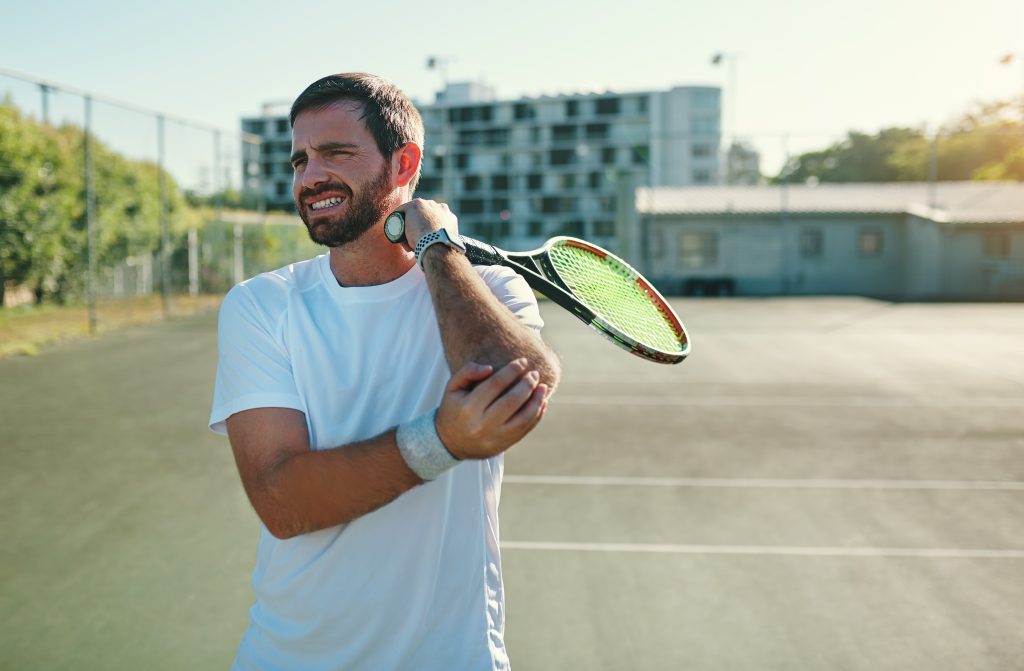
Tennis elbow is not only caused by playing tennis!
A typical cause of the condition is a repeated “backhand” tennis stroke, hence the name tennis elbow. In addition to tennis, we are seeing an increased incidence of this condition in handball, volleyball , and table tennis players , as well as in cross-country skiers. Of the activities of daily living, screwing, wringing , and lifting with the hand above the object (not below the object) place the greatest stress on the origin of these muscles. Pain may also be exacerbated by the crease in the joint capsule, which can become excessive with prolonged overuse.
Examination of the tennis elbow (-elbow)
When tennis elbow is suspected, the patient usually undergoes a thorough physical examination to evaluate symptoms and confirm the diagnosis. The physician will also ask about the patient’s medical history to determine what activities may have triggered the pain.
In addition to the physical examination, imaging techniques such as X-rays or ultrasound may be used to rule out other possible causes of the pain and to examine the condition of the tendons and bones in more detail. This imaging can help rule out other injuries or conditions that could cause similar symptoms.
In some cases, the doctor may also perform electrical muscle stimulation (electromyography) to check for muscle activity and possible nerve damage.
However, the diagnosis of tennis elbow is based primarily on the patient’s characteristic symptoms, physical examination, and medical history. On examination, we typically note pain when shaking hands or lifting a chair (holding the back from above).
Once diagnosed, the doctor may recommend appropriate treatment to relieve pain and promote healing.
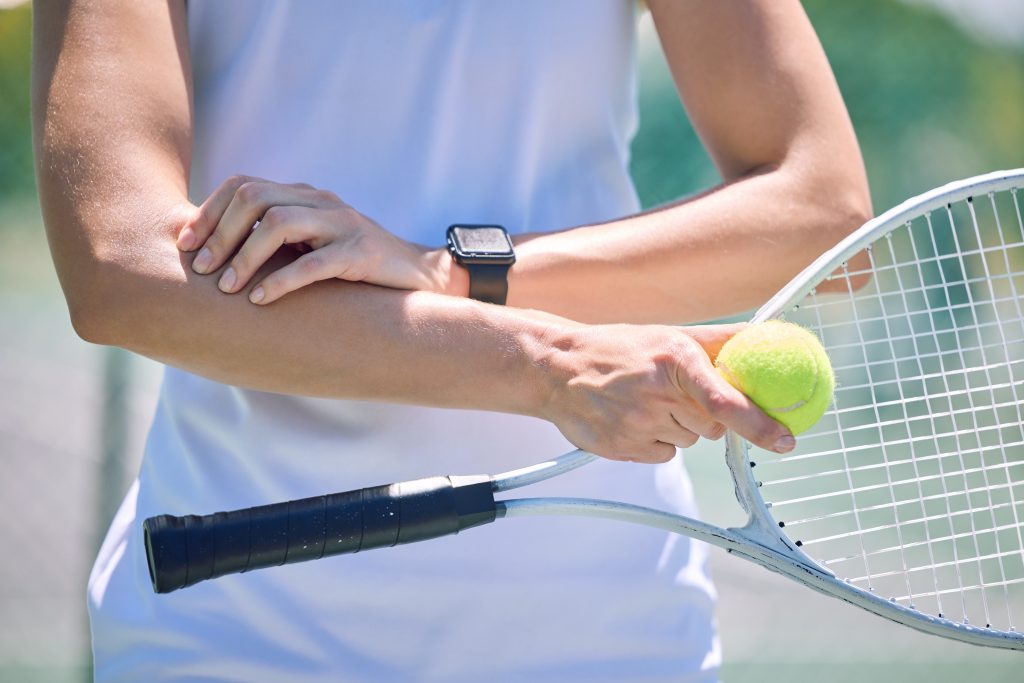
Treatment of tennis elbow (-elbow)
Tennis elbow treatment plays a critical role in relieving pain and restoring functionality in the elbow area. Both
operational
as well as
conservative therapy approaches
offer ways to manage discomfort and support a speedy recovery. Depending on the severity of symptoms and individual circumstances, the treating physician can recommend the most appropriate method to provide the patient with optimal care.
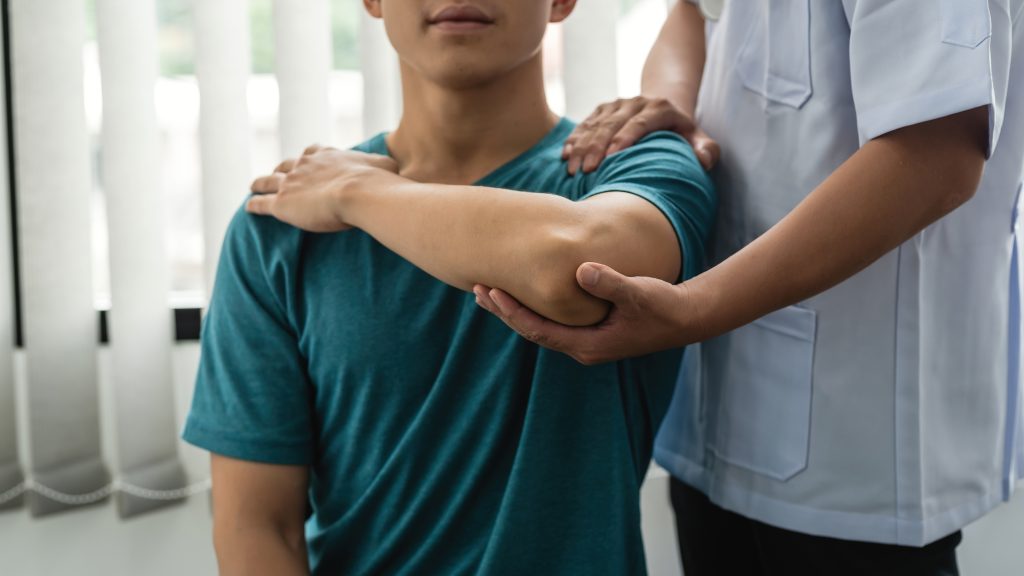
Conservative treatment of tennis elbow
Conservative treatment of tennis elbow, also called tennis elbow, aims to relieve pain and promote healing of the affected tendons without surgery. This noninvasive approach is often effective, especially for early or mild cases.
In the acute phase (i.e., when the patient or patients are suffering from severe pain), an orthosis or taping can be used to relieve the muscles. In the chronic phase, the so-called epicondylar bandage is used, which tightens the upper part of the forearm. Medication can also be used to relieve pain. Among the medications , the so-called non-steroidal anti-inflammatory drugs, which soothe locally irritated tissues, dominate. They can be administered generally (tablets) or locally (in the form of a gel).
The physical treatment methods can be individually chosen between shock wave, laser, ultrasound or electrotherapy. Cortisone infiltration , which is very popular among physicians, is not recommended more than twice because of its negative effect on soft tissue.
Nowadays, infiltrations with platelet-rich plasma (PRP) or hyaluronic acid are coming to the fore. Most important, however, are the measures that the patient must take into his or her own hands. This means that the patient must avoid all activities that cause pain for several weeks. Physical therapy can help incorporate specific exercises into daily life to help manage pain.
Surgical treatment of tennis elbow
If intensive conservative treatment is unsuccessful for six months, one may consider proceeding to surgical treatment. There is a whole range of operations, most of which are now considered obsolete. If surgery is desired, it can be done by stab incision or very carefully with an arthroscope.
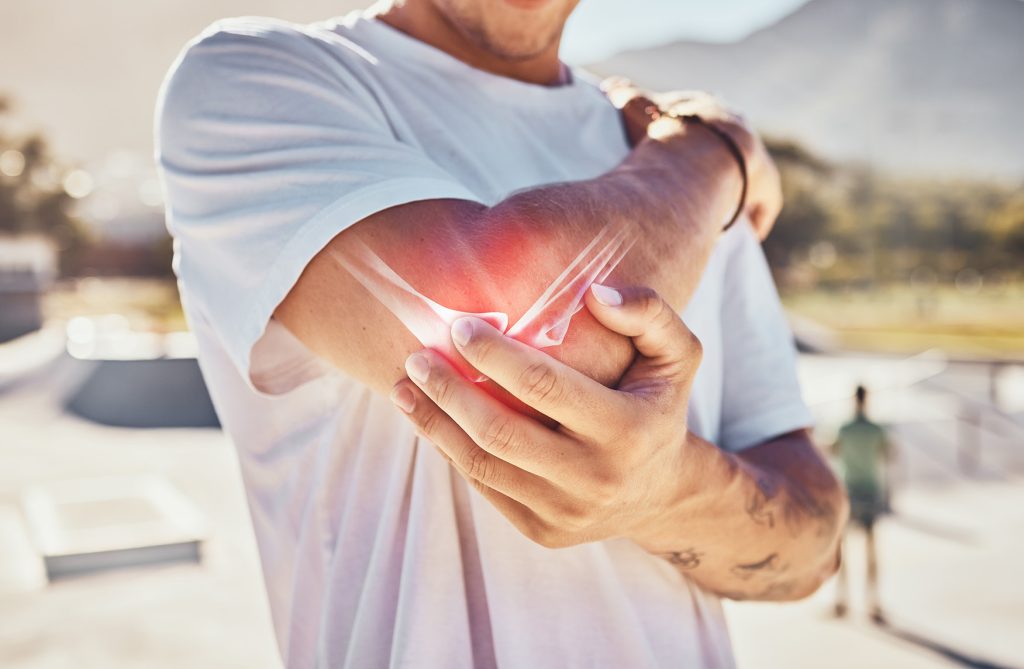
My practice in Vienna
Tennis elbow is a common condition that makes life uncomfortable for many people in the long run. In order for the treatment to be successful and for the disease not to become chronic, it should not be underestimated and should be managed by an orthopedist who specializes in this problem. If you suspect tennis elbow or tennis elbow – contact me for an appointment! I look forward to hearing from you!